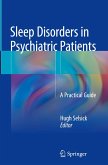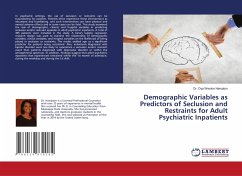Electroencephalography (EEG) is a neuroimaging technique utilized to record the brain's electrical activity from the surface of the scalp. Between the smooth, sinusoidal EEG rhythms of regular brain waves and the clearly pathological abnormalities seen in epilepsy lies a controversial and brief aberration called the sharp wave. A sharp wave, also known as an epileptiform or paroxysmal discharge, is time-limited electrical event that represents several thousands of excitable neurons firing synchronously. While some researchers and clinicians approach sharp waves as important factors of symptomatology and treatment design, others consider sharp waves as benign. This work analyzed symptom presentation in psychiatric patients with sharp waves. Sharp waves were both highly prevalent and correlated with symptom presentation. Interestingly, isolated, highly focal sharp waves were associated with more severe pathology while those distributed to homologous brain regions are hypothesized to serve a protective role. Reasons for this outcome are explored in light of recent neuronal network theory. This work highlights the important need to revisit the role of sharp waves in psychopathology.








